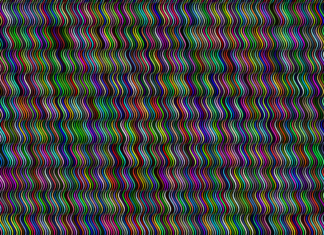Typecase is a versatile tool used in typography and printing. It’s a cabinet or drawer where printers store movable type, each compartment containing a different character or symbol. This system allows printers to quickly access and organize typefaces for efficient printing processes. Understanding Typecase involves delving into its history, functionality, and significance in the world of typography and printing.
History of Typecase:
The origins of Typecase can be traced back to Johannes Gutenberg’s invention of the movable type printing press in the 15th century. As printing technology advanced, printers sought efficient ways to organize their typefaces. The development of Typecase paralleled the evolution of printing, with early iterations consisting of wooden cabinets with compartments for each typeface. Over time, Typecases evolved to accommodate different fonts, sizes, and styles, reflecting the growing diversity of printing needs.
Functionality of Typecase:
A Typecase typically consists of multiple compartments, each designated for a specific typeface or character. These compartments are organized systematically, often following a standardized layout known as the California Job Case. The arrangement of characters in a Typecase enables printers to locate and retrieve type quickly during the printing process. By categorizing typefaces based on frequency of use and ease of access, Typecases enhance efficiency and productivity in printing operations.
Significance in Typography:
Typecases play a crucial role in typography by facilitating the organization and selection of typefaces for various printing projects. They provide a tangible representation of the available fonts and characters, allowing designers and printers to make informed decisions about typography and layout. Additionally, Typecases preserve the historical and cultural heritage of printing, serving as artifacts of a bygone era when craftsmanship and precision were paramount in the printing industry.
Components of a Typecase:
A standard Typecase consists of several components, including compartments, dividers, and labels. Compartments are divided into smaller sections to accommodate individual typefaces or characters. Dividers help organize the compartments and prevent type from mixing together. Labels indicate the content of each compartment, providing a visual reference for printers. Together, these components form a cohesive system for storing and accessing movable type efficiently.
Types of Typecases:
Typecases come in various sizes and configurations to suit different printing needs. Common types include the California Job Case, which organizes characters based on their frequency of use, and the Upper and Lower Case, which separate uppercase and lowercase letters. Other variations include specialty cases for specific typefaces or languages, as well as custom-made cases designed to accommodate unique printing requirements.
Evolution of Typecases:
Over the centuries, Typecases have undergone numerous adaptations and improvements to keep pace with technological advancements in printing. Early Typecases were crafted from wood, but later versions utilized materials such as metal and plastic for increased durability and longevity. Modern printing techniques, such as digital typesetting, have reduced the reliance on physical Typecases, yet they remain relevant in traditional printing and as historical artifacts.
Preservation of Typecases:
Due to their historical significance, many Typecases are preserved in museums, libraries, and printing workshops around the world. These collections serve as valuable resources for researchers, historians, and enthusiasts interested in the history of printing and typography. Preservation efforts aim to safeguard Typecases for future generations, ensuring that their cultural legacy endures.
Contemporary Use:
While traditional printing methods have declined in favor of digital technology, Typecases continue to hold relevance in niche markets and artisanal printing industries. Letterpress enthusiasts, bookbinders, and typographers often use Typecases as essential tools in their craft, embracing the tactile experience and historical authenticity they provide. Additionally, Typecases serve as decorative pieces in interior design, showcasing the craftsmanship of bygone eras.
Importance in Printing Education:
Typecases play a vital role in printing education, serving as practical teaching aids for students learning about typography and typesetting. By familiarizing students with the layout and organization of Typecases, educators impart valuable skills and knowledge essential for understanding the history and principles of printing. Hands-on experience with Typecases fosters an appreciation for traditional printing methods and encourages creativity in design and composition.
Cultural Legacy:
Beyond their functional utility, Typecases embody a cultural legacy rooted in centuries of printing tradition. They evoke nostalgia for a time when print was the primary medium for disseminating information and shaping public discourse. As artifacts of craftsmanship and ingenuity, Typecases symbolize the enduring impact of printing on human communication and culture, serving as tangible reminders of our collective heritage.
Typecase holds a significant place in the history of printing and typography, representing a tangible link between past and present practices. From its origins alongside Gutenberg’s movable type press to its contemporary use in artisanal printing and education, Typecase remains an enduring symbol of craftsmanship, efficiency, and cultural heritage. Understanding the role and significance of Typecase provides insight into the evolution of printing technology and its enduring impact on human civilization.
Typecase, a fundamental component in the history of printing and typography, has evolved alongside advancements in printing technology, yet its significance remains deeply rooted in tradition and craftsmanship. Originating with Johannes Gutenberg’s invention of the movable type printing press, Typecases have played a pivotal role in organizing and accessing typefaces for printing projects. These cabinets, typically divided into compartments for different characters and fonts, exemplify the meticulous attention to detail required in the printing industry. Over time, various types and configurations of Typecases have emerged to meet the diverse needs of printers, from the California Job Case to specialized cases for specific languages or typefaces.
While digital typesetting has diminished the prominence of physical Typecases in modern printing, their cultural and historical significance endures. Preserved in museums and printing workshops worldwide, Typecases serve as tangible artifacts of a bygone era, offering insights into the craftsmanship and precision of traditional printing methods. Furthermore, the continued use of Typecases in letterpress printing, bookbinding, and typographic design underscores their enduring relevance in niche markets and artisanal industries. Despite the march of technological progress, Typecases evoke nostalgia for a time when print media was the primary means of communication, reflecting the rich tapestry of human history and culture.
In contemporary printing education, Typecases hold educational value as practical teaching aids for students learning about typography and typesetting. By providing hands-on experience with organizing and selecting typefaces, educators instill essential skills and knowledge essential for understanding the principles of printing. Moreover, exposure to Typecases fosters an appreciation for traditional printing methods and encourages creativity in design and composition. As a result, Typecases continue to play a vital role in shaping the next generation of printers, typographers, and graphic designers, ensuring that the legacy of printing craftsmanship endures.
The preservation of Typecases is essential for safeguarding their cultural legacy and historical significance. Museums, libraries, and printing enthusiasts alike are dedicated to preserving these artifacts for future generations, recognizing their value as tangible links to our printing heritage. Through conservation efforts and public exhibitions, the importance of Typecases in shaping human communication and culture is perpetuated, ensuring that their impact is felt for years to come. As symbols of ingenuity and craftsmanship, Typecases serve as a testament to the enduring power of print media in shaping the course of history.
In conclusion, Typecases represent more than just functional tools in the printing process; they embody centuries of innovation, tradition, and cultural heritage. From their humble beginnings alongside Gutenberg’s printing press to their contemporary use in niche printing industries, Typecases remain a symbol of craftsmanship and precision. As we navigate the digital age, the legacy of Typecases serves as a reminder of the enduring value of traditional printing methods and the profound impact they have had on human civilization. Understanding the history, functionality, and significance of Typecases provides insight into the evolution of printing technology and its enduring influence on human communication and culture.






















